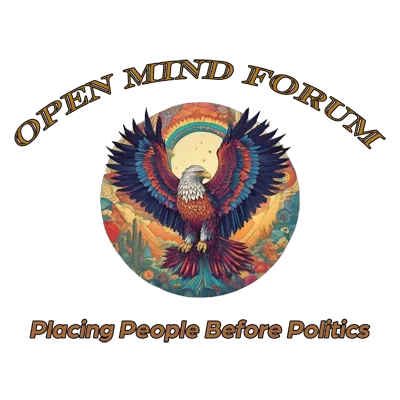Or Believe as I Believe or So Help Me God!
Introduction
The Rise of Right Wing Christian Nationalism represents a stark contrast to the American ideal of religious freedom. This authoritarian stance, reflected in the imposition of beliefs by those with power, opposes the very principles the United States was founded on.

Instead of respecting individual rights to worship—or not—The Rise of Right Wing Christian Nationalism distort religious freedom into religious imposition. This essay will explore how these forces manipulate religious freedom, especially through Right-Wing Christian Nationalists and Evangelical preachers, who seek to impose their beliefs on society.
The American Myth of Religious Freedom
America’s story of religious freedom begins with settlers escaping persecution in Europe. They sought a land where they could practice their faith without interference. The First Amendment enshrined this principle, preventing the government from establishing a state religion or impeding personal religious practices. However, The Rise of Right Wing Christian Nationalism use religion as a tool of control, blurring the line between freedom and coercion. Their behavior distorts the ideal of religious liberty by imposing beliefs on others, directly challenging America’s founding values (Hamburger, 2002).
The Right to Conscience
At the heart of American religious freedom lies the right to conscience. Individuals should follow their own beliefs without pressure. Yet, The Rise of Right Wing Christian Nationalism undermine this principle. They use wealth and influence to shape laws, pushing a single set of beliefs on the populace. This practice goes against the idea that faith is a voluntary, personal act. The rhetoric of “believe as I believe or else” violates this sacred American right. True belief comes from the heart, not from fear of retribution (Lupu & Tuttle, 2002).
Coercion and Religious Freedom
Coercion in religious belief destroys the essence of genuine faith. When individuals adopt beliefs out of fear, they abandon true conviction. The legal framework of the United States recognizes that coerced faith is not real faith. The Rise of Right Wing Christian Nationalism, however, manipulate this understanding, using their power to enforce conformity. They claim to defend religious freedom, but they really seek to impose a specific orthodoxy, which undermines the voluntary nature of belief (Laycock, 1990).
The Dangers of Group-Think
The Rise of Right Wing Christian Nationalism create a culture of group-think, where people conform to avoid conflict or exclusion. This dynamic is especially dangerous in religious contexts. In environments dominated by one set of beliefs, dissent becomes risky. Social and economic pressures enforce conformity, leading individuals to suppress their true beliefs. This system contradicts the pluralism that America was built on. It prevents the flourishing of diverse ideas and undermines the very fabric of religious freedom.
The Rise of Right-Wing Christian Nationalism
In recent years, Right-Wing Christian Nationalists have emerged as a powerful force within American politics. Their movement aims to transform the United States into a “Christian nation” by elevating Christian beliefs above all others. The Rise of Right Wing Christian Nationalism support this movement, seeing it as a tool to consolidate their power. Christian Nationalism threatens the pluralistic society that religious freedom promotes by marginalizing non-Christian and secular views. The movement reflects a dangerous merging of political power and religious zealotry, where religious freedom is replaced with religious dominance (Gorski & Perry, 2020).
The Weaponization of Religious Freedom
The Rise of Right Wing Christian Nationalism exploit religious freedom for their own ends. They frame their efforts to impose Christian beliefs on society as a defense of liberty. But in reality, they use religious freedom as a weapon to discriminate and exclude. Legal battles over prayer in public schools and religious displays on government property exemplify this tactic. Their goal is to entrench Christian values in law while marginalizing those who hold different views. This weaponization of religious freedom distorts its true purpose, which is to protect diversity of belief (Inazu, 2016).
Evangelical Preachers and Coercive Beliefs
Evangelical preachers, often aligned with The Rise of Right Wing Christian Nationalism, preach a message of divine authority that demands conformity. While not always promoting violence, their rhetoric often implies dire consequences for non-believers. This creates a culture of fear, where rejecting their beliefs leads to social and spiritual punishment. The Rise of Right Wing Christian Nationalism use these preachers as instruments to maintain control over religious discourse. By aligning with powerful evangelical leaders, they ensure that dissenting views are marginalized, further eroding religious freedom (Stewart, 2019).
Conclusion
The Rise of Right Wing Christian Nationalism embody a contradiction to the American ideal of religious freedom. Their efforts to impose beliefs through fear, coercion, and group-think violate the fundamental right to conscience. By supporting Right-Wing Christian Nationalists and evangelical preachers, they blur the line between religious freedom and religious imposition. This coercive mentality not only threatens individual liberty but also undermines the pluralism that strengthens American democracy. True religious freedom allows individuals to choose their path without pressure or threat, and that is the vision that the United States must reclaim.
______________________
Sources Cited
Gorski, P. S., & Perry, S. L. (2020). The flag and the cross: White Christian nationalism and the threat to American democracy. Oxford University Press.
Hamburger, P. (2002). Separation of church and state. Harvard University Press.
Inazu, J. D. (2016). Confident pluralism: Surviving and thriving through deep difference. University of Chicago Press.
Laycock, D. (1990). Religious liberty as liberty. The Journal of Contemporary Legal Issues, 1, 313-336.
Lupu, I. C., & Tuttle, R. W. (2002). Secular government, religious people. Eerdmans Publishing Company.
Stewart, K. (2019). The power worshipers: Inside the dangerous rise of religious nationalism. Bloomsbury Publishing.
______________________________________
Suggestions for Future Reading
- Marty, M. E. (1996). The One and the Many: America’s Struggle for the Common Good. This book explores the tension between individual and collective religious identity in American life.
- Sullivan, W. F. (2005). The Impossibility of Religious Freedom. This work critically examines how the legal system handles religious freedom cases in the U.S.
- Taylor, C. (2007). A Secular Age. Taylor offers a deep exploration of how secularism and religion have shaped modern society.
- Nussbaum, M. C. (2008). Liberty of Conscience: In Defense of America’s Tradition of Religious Equality. Nussbaum argues for the protection of religious liberty as a means of ensuring equality.
- Green, S. K. (2010). The Bible, the School, and the Constitution. Green examines the history of religious conflict in American public education.
- Smith, C. (2003). Moral, Believing Animals: Human Personhood and Culture. This book offers insight into how belief systems shape societal structures and individual actions.
Disclaimer: The images and videos in this post are AI-generated creations, intended purely for illustrative and conceptual purposes. They are not real-life representations and should not be interpreted as such. Their sole purpose is to offer a visual means of exploring the topics discussed in this post.




